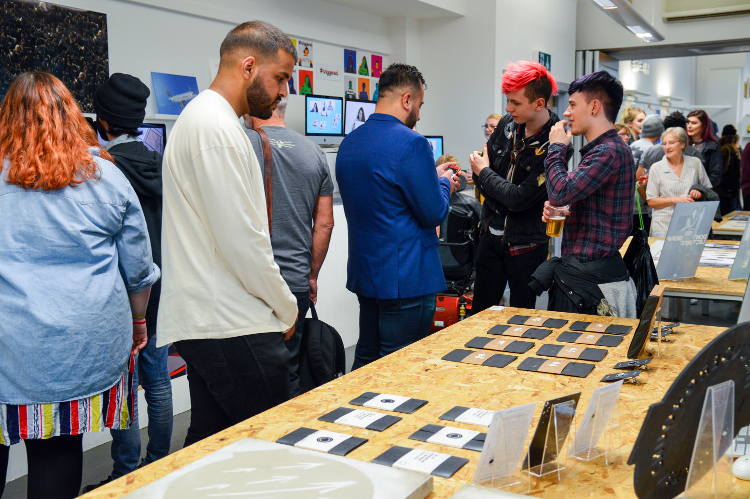The mastermind of Technical Manager Coordinator at the university’s School of Art, Design and Architecture, Stephen Calcutt, the print room houses a Mimaki UJF small format flatbed LED UV printer, a state of the art Mimaki Tx300P-1800 direct to textile printer alongside further small format transfer printers, large format graphics devices, plus binding and other finishing processes.
“Our initial investment in the Mimaki UJF and its subsequent location in our School-wide print facility totally changed our approach to teaching and supporting print design,” recalls Calcutt. “We originally operated the facility like a traditional university print bureau, with about five large format printers churning out posters and graphics. The arrival of the UJF changed our focus and transformed the way we work.”
Now, with the facility offered to students from other courses alongside the textile users, it’s a thriving, interactive hub where students are taught to question conventional thinking and utilise the creative capabilities of the Mimaki printers to the best of their ability. Key to this behavioural change is PhD student and senior lecturer, Brent Hardy-Smith. “I’m not here to sit and critique students’ work,” he says. “Instead, I run workshops, learning alongside the students. Our methodology is all about discovery and transformative design, using the printers as creative tools and collaborating with other technology and materials.”
“Teaching becomes more about facilitating,” he continues. “Whether that’s facilitating people, equipment or thinking, it’s all relevant to the process and helps lead the students in different directions.”
“I encourage them to ask, ‘can we?’ and to question convention,” he states. “The design software says what’s possible but it’s the Mimaki printers that add the potential, and this is transforming the way the students think about the connection between design and print.”
Huddersfield University is centrally located in the town, itself surrounded by the Pennines and steeped in a rich textile printing heritage. With major investment and development on the cards, the university’s School of Art, Design and Architecture is set to move to a high-tech new building in 2019, but for now, offers a creative resource that spans a multitude of disciplines including architecture, animation, photography, graphic design and textiles.
Mimaki’s UJF series of multi award-winning small format flatbed printers is utilised in a broad array of industries, from high-end décor applications to the promotional product printing market. They’re also found within manufacturing environments as well as many other sectors that benefit from its arsenal of creative tools; such as opaque white ink, clear varnish, vibrant process colours and the ability to print to almost any substrate. Purchased through Mimaki reseller R A Smart, the Tx300P-1800 is a versatile, wide format, direct to textile printer that allows students to output to digitally prepared natural fabrics such as cotton, making it a popular choice for fashion and furnishings businesses as well as designers.

“We have an excellent relationship with the team at R A Smart and Laura Newill (our Textiles Specialist Design and Print Technician) and I are always kept well informed on new product developments,” Calcutt affirms. “What pleases me the most however, is the great service we receive from both R A Smart and Hybrid. As a manager, it’s essential that I am confident that our staff will be well supported in the implementation and development of newly acquired technologies and I know that Laura can rely on the technical expertise of the engineers and solutions experts.”
“The range of Mimaki hardware that we have teaches the students the appropriateness of print,” continues Hardy-Smith. “They quickly learn what to use and why. From their initial amazement at the potential, by understanding what the printers offer, they can be ever more creative in their design process.”
An annual highlight is the end of year show and the Mimaki printers have played an important role in the work on display. “Students learn to collaborate, so are able to incorporate many different techniques in their exhibitions,” concludes Calcutt. “We encourage them to work with multiple technologies and materials, so the breadth of work is proof of how they’re flourishing as young designers and learning how to operate outside the established framework. None of this would have happened had we not made the initial investment in the Mimaki.”



